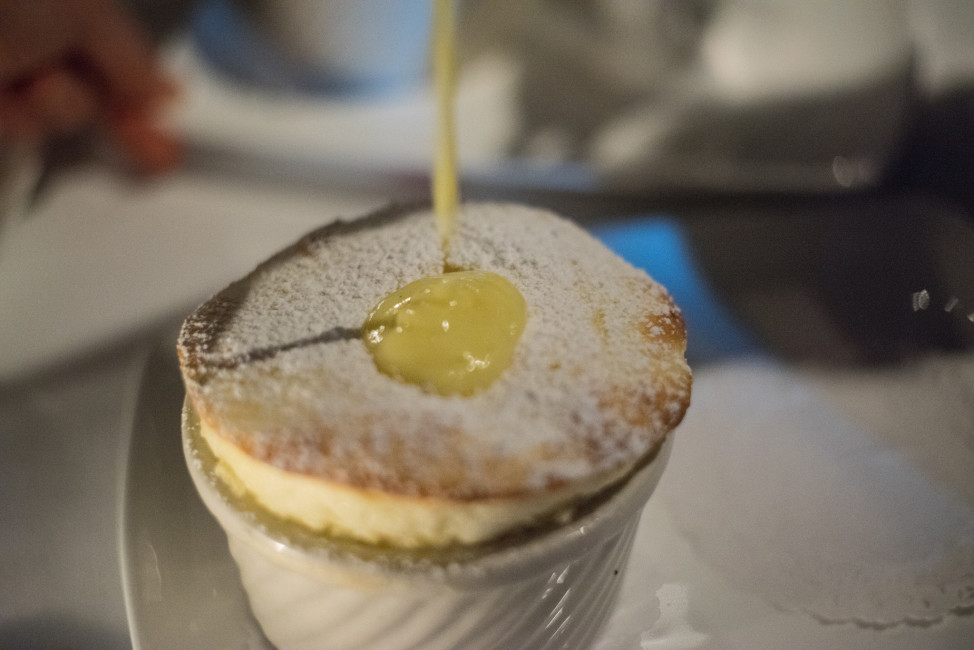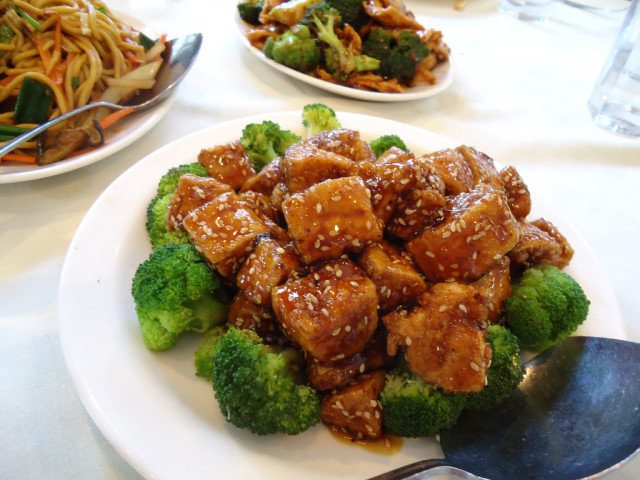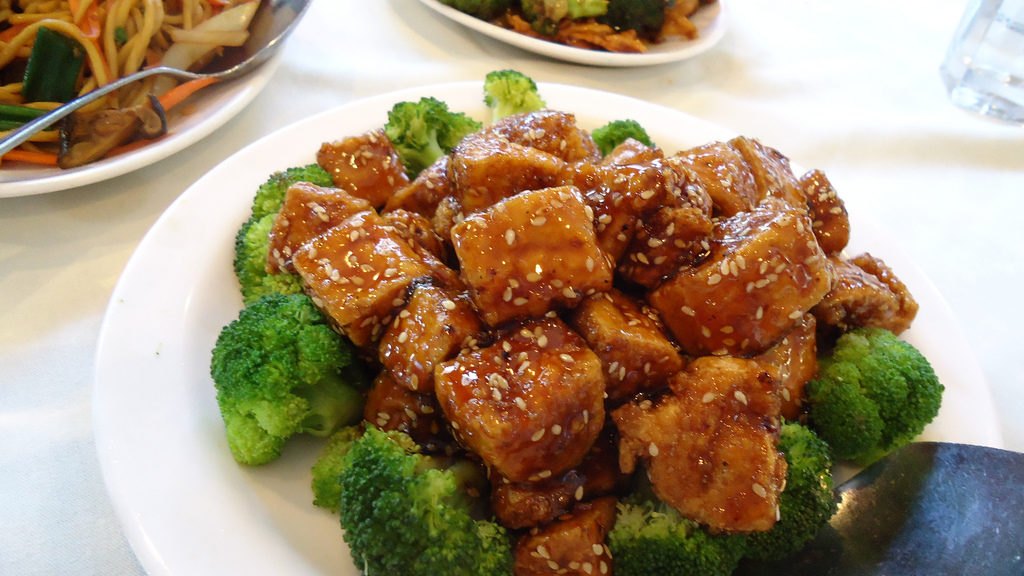
A French restaurant in Cleveland, Ohio, serves up Grand Marnier soufflé with Crème Anglaise. (Photo by Flickr user Edsel Little via Creative Commons license)
Does how we feel about a certain ethnic group determine how much people are willing to pay for that group’s cuisine? If you ask Krishnendu Ray, a professor of food studies at New York University, the answer is yes.
10 MOST EXPENSIVE
ETHNIC CUISINES (2014)French
Japanese
American
Continental
Italian
Spanish
Greek
Korean
Indian
Mexican
“Basically, I see this inverse relationship between migration of poor people from any region in the world and our respect for their culture and cuisine,” he said. “If you take price as a surrogate for prestige…there are some cuisines we are willing to pay for and some we are not willing to pay for, and that is related partly, I think, to how we evaluate those national cultures and their people.”
Ray points out that, while Chinese and Mexican are quite popular, it’s difficult for the restaurants that serve those foods to charge more than $20 for them. The same is true of Vietnamese and Indian offerings.
But that’s not true for certain other ethnic foods. Over the last half a century, the most expensive American restaurants served French, then New American and Continental, and now Japanese food, the price of which climbed sharply in the late 1980s and 1990s.
However, that wasn’t always the case, especially not back in the early 1900s.
“We were full of disdain for Japanese food, so much so that school teachers were putting pressure on Japanese children to improve their diet and eat American,” Ray said. “These Japanese parents were full of regret about how bad their food practices were and how they needed to Americanize them. Flip that 100 years later, and we think Japanese food is terrific and all of us ought to be eating Japanese food.”

Chinese food could be the next cuisine to go upscale. (Photo by Flickr user Meg Stewart via Creative Commons license)
Ray believes the slowing of Japanese immigration to the United States, as well as Japan’s evolution into an economic powerhouse, helped feed this upward re-evaluation of Japanese culture and cuisine.
Italian food received similar treatment when Italians immigrated in the late 1800s and early 1900s, according to Ray. Their food practices were initially met with disdain, but are now a beloved part of the American diet.
“We have seen this before. When poor immigrants come in from a particular region, we are basically unwilling to accord that prestige and pay for it, unlike Italian [food] today when basically all immigration [from Italy] has stopped,” Ray said.
These days, Indian food is still on the inexpensive side, but that could change soon, since not all immigrants from India are poor; half are college educated and enter directly into the professional class when they arrive in the United States.
And, now that China’s economy is booming, Americans might start seeing a few more upscale Chinese restaurants sprinkled in among the 40,000 eateries where many of us regularly pop in for a quick, cheap meal.
More About America
Why Asian-Americans Are the Most Educated Group in America
This US Ethnic Group Makes the Most Money
Mixed Marriage Causing US Asians, Hispanics to Integrate Faster
Why American Teenagers Have Stopped Driving
Newspaper Ads Show Freed Slaves Desperate Search for Relatives
























This has nothing to do with racism, bigotry, or even plain old bias. Ask any chef who doesn’t specialize in one of these cuisines and you’ll get the truth and reason for the disparity in pricing: French food usually uses more expensive ingredients and almost always requires significantly more time and labor to prepare along with more training than most other cuisines. Japanese cuisine is a close second because it, too, uses expensive ingredients and requires advanced training. Mexican and Italian food is not nearly as difficult to master and pasta and vegetable based items are far less expensive than time-consuming French sauces/reductions and French food that focuses heavily on meats & fish. As for “American” cuisine, that is such a very broad definition, that it is not surprising that it would be more expensive than Chinese (lots of vegetables, rice, pasta, and lower proportion of meat/seafood), but less, since it would pick up everything from gourmet burgers to high end California cuisine.
In other words, this article is looking for racism where none exists. It’s about money: the cost of food and the cost of training and the cost of preparation.
You are absolutely right about the cost of ethnic foods. Racism has nothing to do with food pricing while the amount of work needed to prepare and the cons if its ingredients are. Chinese food would be a lot more expensive if we had to use Yak meat and native chinese vegetables to make it. By the way there are also many high class chinese restaurants around the USA but even in them the prices are not that high and out of this world. Then you don’t see that many French restaurants around either. If there were the price of French food would go down like it has for dishes like French Onion Soup and Chicken Cordon Bleu .
When moldy French cheese costs twice what a New York strip steak costs per pound in a supermarket, you know French food is a ripoff. Not only that, their meager portions in restaurants, pretentiousness, and overrated quality are clearly a poor value for money. We have a world of food to choose from in the US. Unless someone else was paying for it like a corporation entertaining clients and the cost will be written off on their taxes as a business expense, French restaurants would not survive in the US. They are not cost competitive with other ethnic food tht is every bit as enjoyable to most Americans. Deprecating America’s other choices of food given its vast range is pure snobbery. And…America’s best wines are now equal or better in quality than the best French wines.
Chinese food is actually quite popular in the US. I mean, there are more restaurants catering that type of food than there are McDonalds here. Because of that, I am only a little surprised that there are only a few upscale Chinese restaurants. In America, we value mass production and the popular something gets, then the cheaper it is as well and the more likely people will eat it.